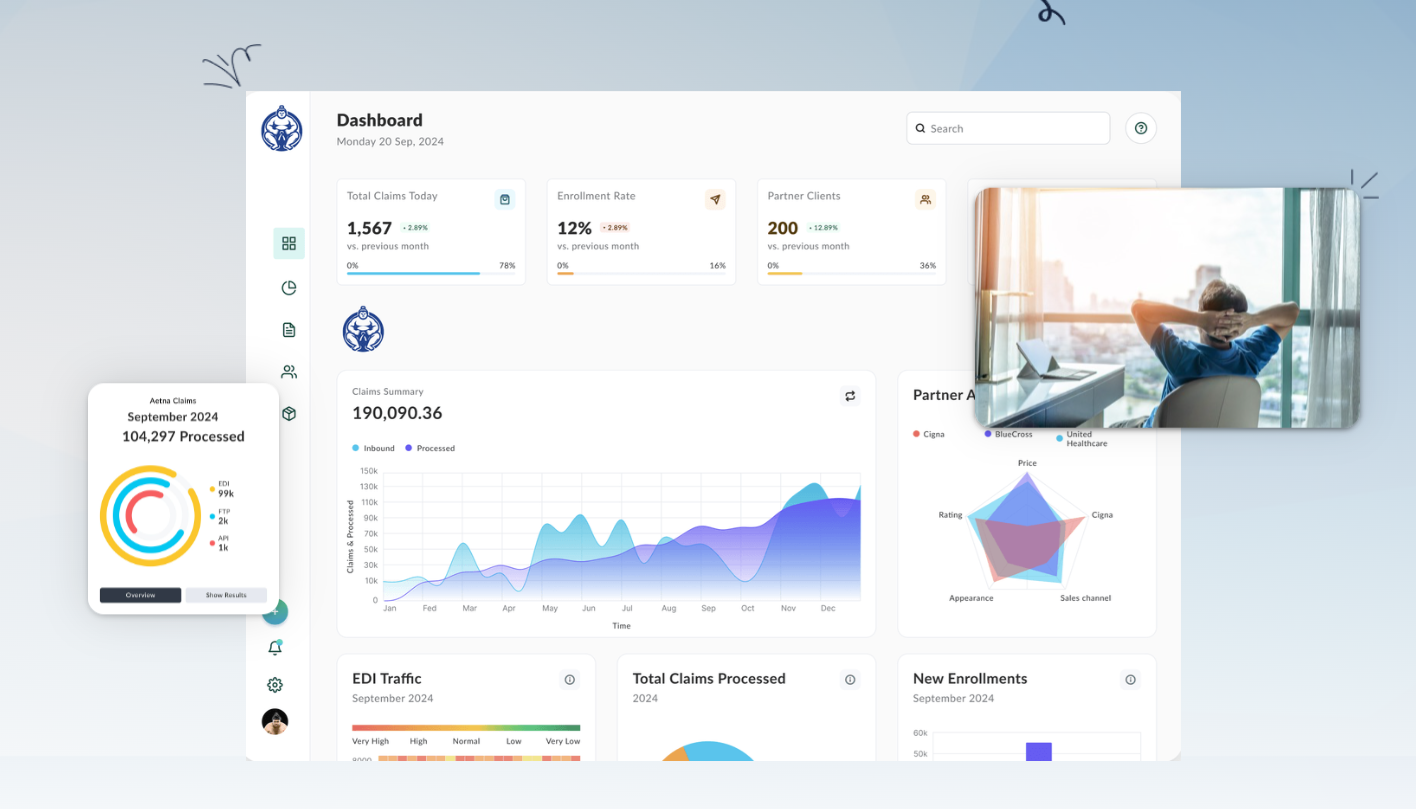Strategies for Streamlining EDI 837 Healthcare Claims Processing and Reducing Denials


Healthcare payers and providers are under relentless pressure to process EDI 837 healthcare claims accurately and efficiently while minimizing costly claim denials. The complexity of healthcare data interchange, especially in institutional and professional claims, turns the 837 workflow into a minefield of data mismatches, compliance checks, and integration headaches. At EDI Sumo, we've worked closely with IT, enrollment, and claims management teams to identify the practical, strategic steps that make the greatest impact. Below, we dive into proven strategies to streamline EDI 837 processing—and reveal how proactive data management directly reduces denials.
Understanding the EDI 837 Claims Workflow—and Where It Breaks Down
The EDI 837 file—the industry standard for electronic healthcare claims—carries all information needed to bill payers for healthcare services. But this format's complexity, along with the diverse systems and file types often encountered (CSV, Excel, XML, positional text, and more), create friction in the intake and validation process. Claims are frequently rejected due to data mismatches, format inconsistencies, or missing fields before they’re even reviewed by payers.
- Input Data Variability: Providers often submit claims data in different file types or layouts. Mapping this into a standardized 837 takes time and risks errors.
- Validation Gaps: Standard HIPAA validation is just the beginning. Custom payer requirements and up-to-date SNIP logic are crucial for catchable mistakes.
- Compliance Pressure: Payers must ensure every claim complies with HIPAA and payer contracts, requiring robust, auditable error handling and notification systems.
Key Strategies for Streamlining EDI 837 Claims Processing
Let’s explore actionable tactics to get ahead of the common pitfalls in EDI claims management, based on real-world workflow optimizations that deliver rapid ROI.
1. Centralize and Standardize Incoming Claims Data
The first and most critical transformation we help our clients make is breaking down data silos. When enrollment, eligibility, and claims data arrive in differing formats (EDI, CSV, XML, etc.), the first pass should always be format normalization. This allows subsequent processing, validation, and auditing to follow a single logic pathway, reducing mapping labor and error rates.
- Automated Format Handling: Use middleware or data hubs capable of recognizing and standardizing all inbound file types into canonical EDI 837 format.
- Reduced Manual Intervention: Eliminating repetitive hand-mapping and transformation safeguards against human error.
2. Implement Real-Time, Granular Validation and Error Tracking
Many organizations settle for default validations, but this leaves significant gaps. At EDI Sumo, we prioritize building custom validation layers that go beyond HIPAA requirements, checking for payer- or plan-specific business rules, coverage periods, member status, and common eligibility mismatches.
- WEDI/SNIP Levels 1-7 Support: Ensure validation isn’t just surface-level—deep-dive into code sets, relationships, and situational rules that payers enforce.
- Automated Error Alerts: Real-time notifications of discrepancies—not just at file level, but at individual claim/item segment—lets you fix problems pre-adjudication, drastically reducing denials.
3. Enhance Data and Transaction Visibility for All Stakeholders
One of the leading causes of claims denials is a lack of transparency. Too often, eligibility, claims, and support teams are working from outdated or incomplete data about a member or transaction. Empowering staff with up-to-date, comprehensive data access results in fewer support escalations, less back-and-forth, and swifter resolutions.
- Unified Dashboards: Bring together claims status, eligibility records, submission history, and support interactions in one interface, accessible by all relevant departments.
- Role-Based Access: Only the right people see sensitive data, but no one is left in the dark—key for fast appeals and customer satisfaction.
4. Prioritize Eligibility and Enrollment Data Integrity
Many denied or pended claims can be traced directly back to eligibility issues: inactive plans, term dates, mismatched demographics, or missing dependents. We see success when organizations treat eligibility data management with the same rigor as claims data, integrating real-time error checking and instant updates across both pipelines.
- Proactive Discrepancy Detection: Automated alerts highlight any mismatch between current eligibility and claim data, allowing intervention before submission.
- Historical Tracking: Retain transaction and eligibility snapshots for each member so past status changes are traceable during appeals or audits.
5. Maintain Robust Compliance and Audit Trails
With stricter HIPAA, GDPR, and contractual audit requirements, maintaining airtight logs of all data flows and user activity is non-negotiable. Modern EDI systems like ours automate real-time audit trail generation, ensuring you’re always ready for compliance reviews or payer disputes.
- Real-Time Audit Trails: Log every claim transformation, validation bypass, and error correction automatically, with immutable records.
- Automated Reporting: Generate compliance reports and partner feedback (e.g., tailored 277/999 responses) without piecing them together manually.

Actionable Tips for Reducing EDI 837 Denials—Based on What Works for Our Clients
In our experience, the following techniques deliver measurable reductions in claims denials and rework:
- Use Automated Alerts to Flag Claims Ready to Deny or Pend: Real-time triggers let billing and enrollment teams correct issues before payers see them.
- Leverage Smart Cross-Checks: Systematically compare member, provider, and code data between claims and current eligibility/enrollment records.
- Regularly Update Payer Rules: Payer guidelines are constantly evolving. Keep your validation logic and exception lists synchronized with the latest payer requirements.
- Conduct Pre-Adjudication Audits: Sample claims pre-submission to catch formatting or business logic issues that would otherwise yield a denial.
Making EDI 837 Claims Workflows Future-Proof
As claim volumes and payer expectations surge, those who invest early in streamlined EDI infrastructure reap ongoing rewards: fewer denials, faster reimbursements, and happier provider networks. Key to this is a modular, scalable platform approach—one that allows rapid onboarding of new file types, custom business logic, and seamless integrations with both legacy systems and modern claim engines.
- Modular Integration: Choose solutions that plug into your existing stack—don’t rip and replace unless absolutely necessary.
- Scalable Performance: Ensure tools can process millions of claims without latency or downtime spikes as you grow.
EDI Sumo: Your Data’s Strongest Ally
At EDI Sumo, we’ve dedicated our platform to removing barriers in healthcare data flow, so busy IT and operations leaders can focus on outcomes, not technical firefighting. By empowering organizations to standardize, validate, and make data accessible, we’re consistently seeing reduced denials, lower operating costs, and improved compliance among our clients. If you’re ready to overhaul your EDI 837 claims processing and take the first step toward fewer denials, faster payments, and a measurably more efficient operation, get in touch with us—or schedule a personalized demo to see the EDI Sumo platform in action.


.png)





.png)

.png)


.png)
